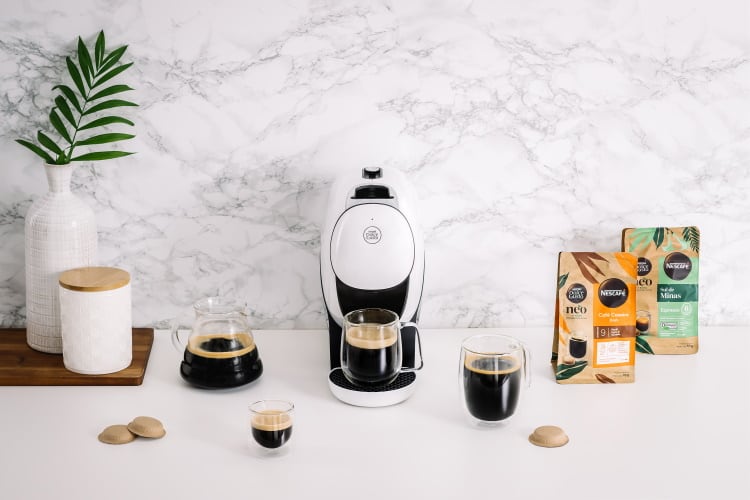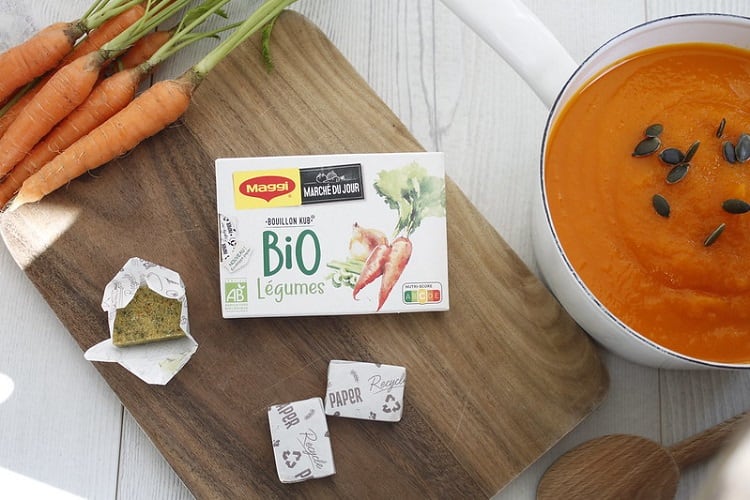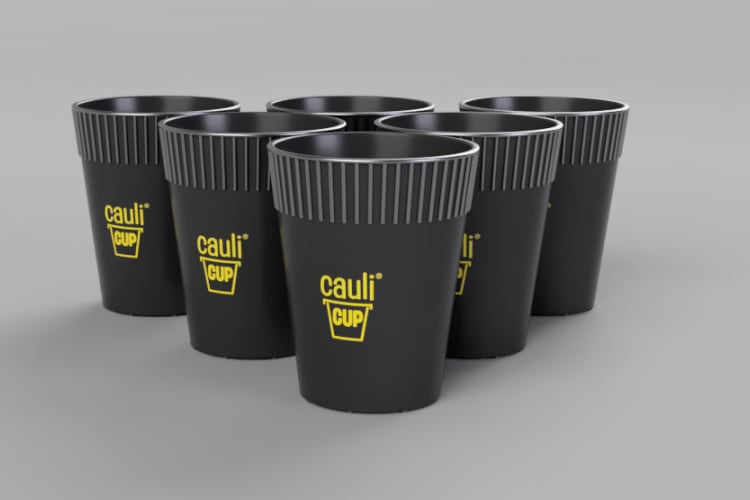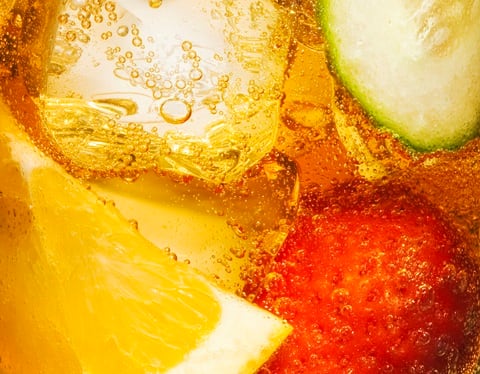Coffee giant Nestlé previewed the new NEO Nescafé Dolce Gusto coffee system at an event for journalists in London this week ahead of its upcoming launch, with initial rollout scheduled to begin in Brazil on 1 December. The company describes the innovation as Dolce Gusto’s ‘next generation’ of machines and pods, combining quality coffee, extended functionality, and compostable pods. But what makes this new coffee system stand out from the crowd?
Arnaud Deschamps, Head of Nescafé Dolce Gusto, said the new approach reflects developments taking place in the broader innovation landscape. “There are two big trends: the digital revolution and the sustainable revolution,” he told journalists, adding that the NEO system pushes the envelope on what is being achieved in both areas. “In a time of rapid change, we see increasing expectations about coffee variety, versatility, personalization, and sustainability, with no compromise on quality and taste… Every aspect of NEO has been carefully considered – the machine technology, the user interface, the coffee and our first home-compostable paper-based pods. NEO represents the long-term future of our brand.”
New brewing technologies
Unlike other coffee machines, NEO is based on a new proprietary and patented brewing technology, dubbed SmartBrew, that combines three brewing methods so consumers can enjoy a wide range of black coffee options including espressos, americanos and drip-style coffees. To be able to do this with one machine is a significant development, Deschamps stressed.
“We wanted to have different coffee machines combined in one, where you can do everything… This is a new approach,” he noted.
The innovation builds on 40 years of expertise at the Global R&D Center for Systems and Coffee Machines, which has developed solutions across Nestlé coffee brands including Nespresso and Dolce Gusto as well as categories like tea and infant nutrition. “It’s not just about making a pod or a machine, understanding the system is important,” explained Center Head Julia Lauricella.
The system, she told us, is comprised of three components – coffee, packaging and machine – that interact to determine overall functionality and consumer experience. “Whenever we develop a new system, we need to harmonize its three key elements for the perfect in-cup result,” the R&D expert continued. “For NEO, we have developed a large range of black coffee options using new brewing technologies.”
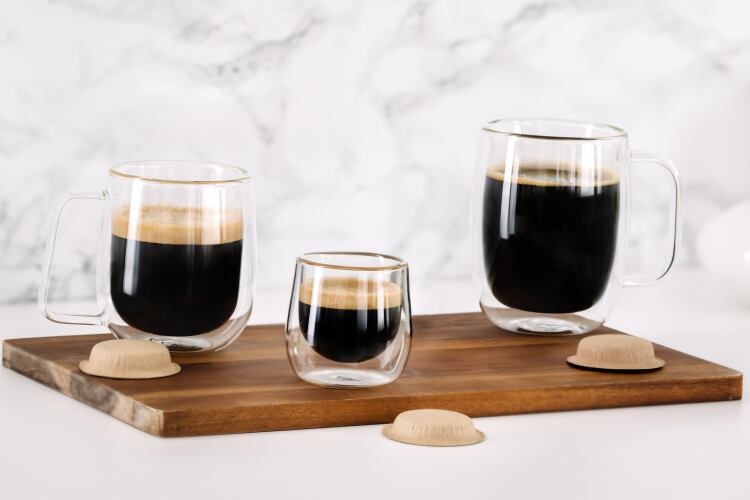
The communication between machine and packaging is key to how NEO is able to tap into the distinct brewing technologies within its platform. Each pod carries a code that delivers ‘complete traceability’ and will automatically ‘trigger different extractions’ for coffee recipes when inserted into the machine. “The machine has full control of what extraction it is doing for each beverage,” Lauricella detailed. “Our proprietary SmartBrew system tunes the extraction parameters for each beverage, and you can even personalise your cup through the connected application.”
The system links to user's smart phones, allowing people to modify metrics like temperature or strength to specific preferences. This also connects to the Nescafé Dolce Gusto’s loyalty program, which offers rewards and personal recommendations adapted to the consumer's profile each time a coffee is prepared. “The information we capture is what the consumer wants. It is an opportunity to have a more bespoke interaction with them,” Deschamps said.
Sustainable by design
From the outset, the new system was developed with sustainability in mind. The coffee machine itself is made of 50% recycled plastic (for non-food contact parts) and the thermoblock that heats the water is made of 85% recycled aluminium.
“The machine was designed to last, with reparability for up to 10 years,” Lauricella continued. NEO is also designed to be more convenient to dismantle and repair, has an A++ energy class rating, and a switch-off eco-mode.
The pods themselves not only help unlock additional functionality – they too represent a breakthrough in sustainability of Nescafé Dolce Gusto’s offering.
When developing the pods, Nestlé wanted to leverage sustainable materials while preserving coffee quality and delivering performance within the machine. The aim was home composability plus performance in the system, which means they have to be resistant to high temperatures and pressure, as well as moisture.
“Even if it is degradable in the environment, we can’t sacrifice coffee quality,” Lauricella stressed adding the biggest risk factor is oxidisation. “It you use paper, you have the challenge of forming it… It is a very delicate process, but that is the easy part,” Lauricella reflected. “For NEO, our teams tested over 200 novel material structures before perfecting the paper-based pod.”
The result is a Nestlé first: pods that are paper-based, fully home compostable – as certified by TÜV Austria – and use 70% less packaging by weight than current capsules.
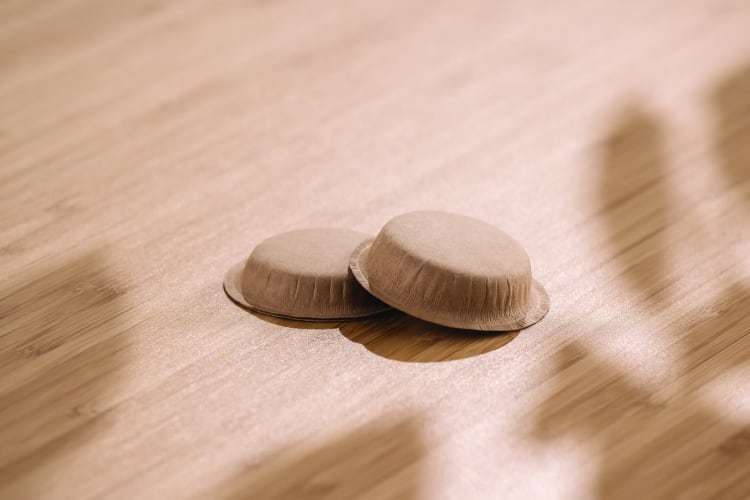
These new pods are made from 1g of paper certified by Forest Stewardship Council (FSC) suppliers with a compostable biopolymer lining – thinner than a human hair – to help protect Nescafé Dolce Gusto’s NEO coffee quality and freshness from oxidation. The secondary packaging is made from plastic, meeting food safety requirements and protecting against issues like humidity. This flexible plastic is a light-weight mono-material that has been designed for improved recyclability compared to standard flexible plastics. However, it is currently made from virgin plastic due to ‘supply constraints’, we were told.
As with all Nescafé Dolce Gusto coffees, NEO is 100% responsibly sourced, the company noted.
Global expansion plans
The new paper-based capsules are entirely produced in Nescafé Dolce Gusto’s factory in Montes Claros, Brazil. Montes Claros is the first Nestlé factory to receive Nestlé’s internal sustainability certification “Triple Zero” for three dimensions: zero water, waste creation and greenhouse gas emissions. Nestlé will invest more than CHF50 million (R$300 million) in Brazil’s Montes Claros factory to support the NEO launch, where it is opening a dedicated production line. It will cost Brazilian consumers the equivalent of €170, which is 'a little more expensive' than the existing Dolce Gusto. Machine pods will cost an equivalent of 50 cents.
The company confirmed it does plan to expand NEO to more countries over time. No date has yet been decided for a European launch but production will be located in the region.

